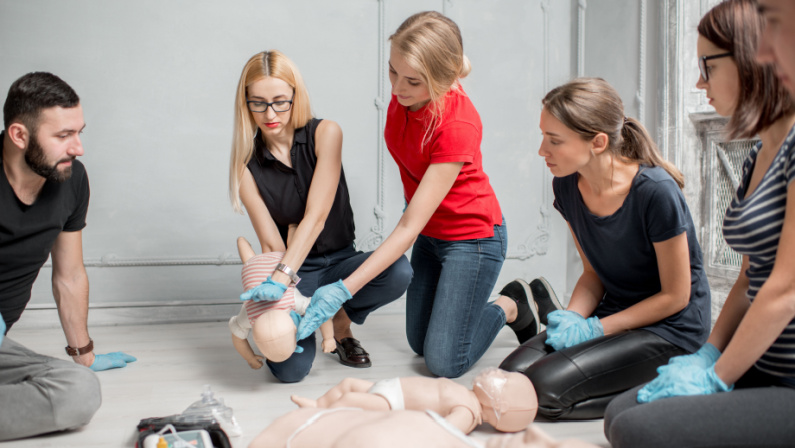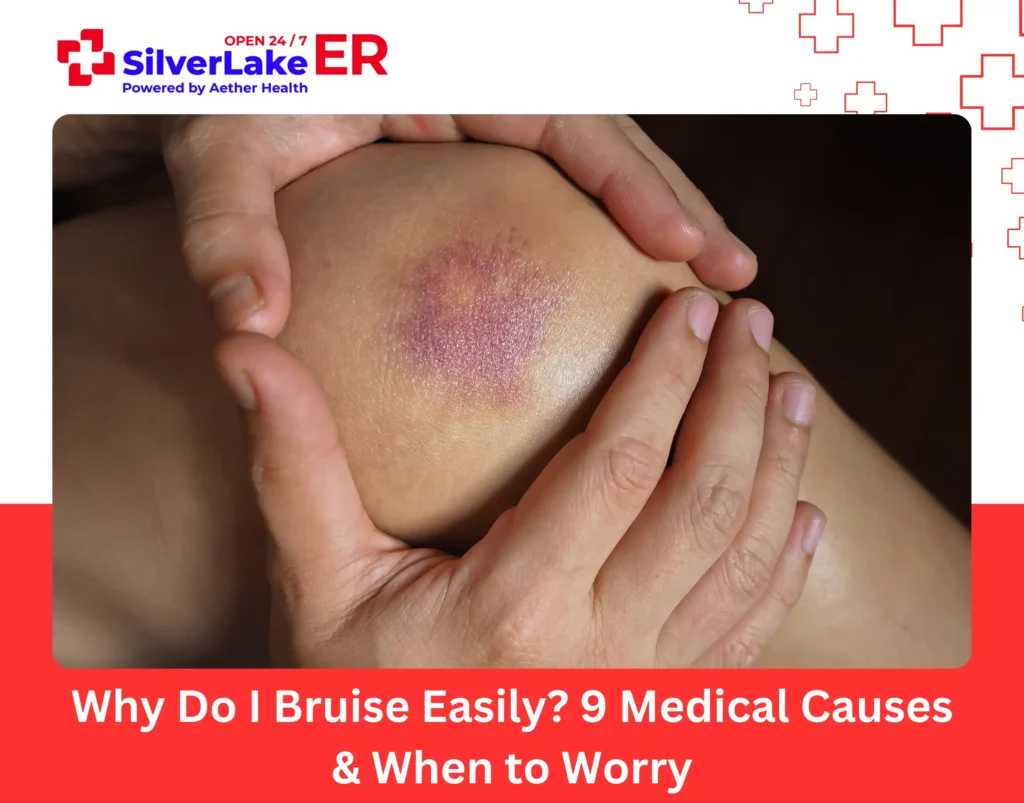Choking is a terrifying experience that can happen to anyone, anytime and anywhere. In this blog, we aim to equip you with the knowledge and skills on how to stop yourself from choking.
We’ll discuss what choking is, how to recognize it, and provide you with essential techniques to prevent and manage this life-threatening situation.
What is Choking?
Choking occurs when a foreign object, usually food, gets lodged in the throat or windpipe, blocking the flow of air.
This blockage can lead to severe consequences, such as oxygen deprivation, brain damage, and even death, if not addressed immediately.
Understanding the causes and signs of choking is crucial to react quickly and appropriately in such situations.

What are the Common Causes of Choking?
Choking can be caused by various factors, and being aware of these common causes can help you take preventive measures to minimize the risk.
Let’s explore some of the most frequent reasons people choke and how to avoid them.
Food
Food is the most common cause of choking, especially when it’s not chewed properly. Large pieces of food can easily become lodged in the throat. To prevent choking on food, make sure to cut it into small pieces and chew thoroughly before swallowing.
Small Objects
Small objects like toys, coins, and buttons can be easily swallowed, especially by young children. Keep these items out of reach of children, and be cautious when handling them around kids.
Alcohol and Drugs
Alcohol and drugs can impair your ability to swallow and increase the risk of choking. Avoid consuming excessive amounts of alcohol, and be cautious when taking medications that can cause drowsiness or affect your swallowing reflex.
Dental Issues
Missing teeth, dentures, or other dental problems can make it difficult for people to chew food properly, increasing the risk of choking. Regular dental check-ups and addressing dental issues can help prevent choking incidents.
Medical Conditions
Certain medical conditions, such as neurological disorders or gastrointestinal problems, can increase the risk of choking. If you have a medical condition that affects your ability to swallow, consult your doctor for guidance on how to minimize the risk of choking.
Age
Both young children and elderly people are at a higher risk of choking. Children often put objects in their mouths, while older adults can have difficulty swallowing due to age-related muscle weakness. Keep a close eye on young kids and provide appropriate assistance to elderly individuals during meals.
Eating Too Quickly
Eating too quickly can lead to inadequate chewing and swallowing of large pieces of food, increasing the risk of choking. Take your time during meals and focus on chewing your food properly before swallowing.
Improper Bottle Feeding
Improper bottle-feeding techniques can cause infants to choke on formula or breast milk. Ensure that the nipple of the bottle is the appropriate size and shape for your baby’s age, and hold the bottle at the correct angle to minimize the risk of choking.

How to Recognize the Signs of Choking?
It is crucial to recognize the signs of choking quickly to take appropriate action and potentially save a life. Choking can be silent and may not always be obvious, so it’s essential to be aware of the common symptoms.
Here are some key signs to look out for in a choking person:
Difficulty Breathing
One of the most apparent signs of choking is difficulty breathing. If someone is struggling to breathe or appears to be gasping for air, it could indicate a blocked airway.
Inability to Speak
If a person cannot speak or is having trouble producing sound, it may be a sign that their airway is obstructed. A choking person might try to communicate their distress non-verbally, so pay close attention to their body language.
Clutching the Throat
A universal sign of choking is when someone clenches their throat with one or both hands. This instinctive gesture signifies that they struggle to breathe and need immediate help.
Facial Discoloration
A choking person’s face may turn red initially due to a lack of oxygen. As the situation progresses, their face may become pale or even bluish. This change in color is a clear indication that the person requires immediate assistance.
Wheezing or Noisy Breathing
If a person is choking, they may produce wheezing or high-pitched noises while trying to breathe. This sound is caused by air struggling to pass through the blocked airway.
Panicked or Distressed Behavior
A choking person may exhibit signs of panic or distress, such as flailing arms, wide eyes, or a look of fear. Be aware of these non-verbal cues and act quickly if you suspect someone is choking.
Loss of Consciousness
In severe cases, a choking person may lose consciousness due to a lack of oxygen. If someone collapses and is unresponsive, it’s crucial to immediately call for emergency assistance and begin first aid measures.
What Immediate Actions Should You Take if You’re Choking?
If you find yourself choking and unable to breathe, it’s essential to act quickly to dislodge the object blocking your airway.
Follow these steps to know what to do if you are choking alone:
- Stay calm: Panicking can worsen the situation. Try to remain as calm as possible and focus on your actions.
- Cough forcefully: If you can still cough, attempt to cough forcefully to expel the object from your airway.
- Perform the Heimlich maneuver on yourself: If coughing doesn’t work, perform the Heimlich maneuver on yourself. To do this, place a fist with one hand just above your navel. Grasp your fist with your other hand and press inward and upward with quick, forceful thrusts. You can also lean over a firm object, like a chair, and press your abdomen against it to create a similar effect.
- Call for help: If the object remains lodged and you can’t breathe, call for help or signal to someone nearby to call emergency services.
How Can You Prevent Choking Incidents?
Taking preventive measures can significantly reduce the risk of choking.
Here are some tips on how to survive choking when alone:
- Chew food thoroughly: Make sure to chew your food properly before swallowing it to break it down into smaller, more manageable pieces, this also prevents choking on your own saliva.
- Avoid talking while eating: Talking while eating can increase the risk of choking, as it can cause you to accidentally inhale food.
- Eat slowly: Eating too quickly can lead to inadequate chewing and increase the risk of choking. Take your time during meals and focus on chewing your food properly.
- Keep small objects out of reach of children: Ensure that small objects, such as toys, coins, and buttons, are kept away from young children who might be tempted to put them in their mouths.
- Supervise children during meals: Always supervise young children while eating, and ensure they sit down to reduce the risk of choking.
- Cut food into small pieces: For young children and the elderly, cut food into small, bite-sized pieces to make it easier to chew and swallow.

What to Do If Someone Else is Choking?
If you witness someone choking, it’s essential to act quickly and provide assistance.
Follow these steps on how to treat choking and help a choking person:
- Assess the situation: Determine if the person is choking by asking if they can speak or breathe. Look for signs of choking, such as clutching the throat or facial discoloration.
- Call for help: If the person is choking, call emergency services or have someone nearby call for you.
- Perform the Heimlich maneuver: Stand behind the person, wrap your arms around their waist, and make a fist with one hand. Place your fist just above their navel, grasp it with your other hand, and perform quick, inward, and upward thrusts until the object is dislodged or the person becomes unconscious.
- Begin CPR if necessary: If the person loses consciousness and still has a blocked airway, continue CPR until help arrives.
Remember, acting quickly and confidently can make all the difference when dealing with a choking incident.
How Long is Too Long For Choking?
When a person is choking, time is of the essence. Brain damage can occur within four to six minutes due to a lack of oxygen, and after ten minutes, the likelihood of irreversible damage or death increases significantly.
How Do You Know If Choking is Serious?
Choking can range from mild to severe, depending on the extent of the airway obstruction. It is crucial to act quickly and provide assistance as soon as you recognize that someone is choking.

How to Perform CPR (Cardiopulmonary Resuscitation) in Choking Emergencies?
CPR should be initiated immediately if a choking person loses consciousness and still has a blocked airway.
Here’s a brief overview of how to perform CPR:
- Check for responsiveness: Gently shake the person’s shoulders and ask if they are okay. If there is no response, call for emergency help.
- Position the person: Lay the person flat on their back on a firm surface. Kneel beside them and ensure their airway is open by tilting their head back and lifting their chin.
- Begin chest compressions: Place the heel of one hand in the center of the person’s chest, and place your other hand on top. Press down firmly, compressing the chest by at least 2 inches (5 cm). Release the pressure and allow the chest to return to its normal position. Perform 30 chest compressions at a rate of 100-120 compressions per minute.
- Give rescue breaths: Pinch the person’s nose closed and create a seal over their mouth with your mouth. Give two slow, deep breaths, watching for their chest to rise. If the chest doesn’t rise, reposition the head and try again.
- Continue CPR: Keep performing cycles of 30 chest compressions and two rescue breaths until help arrives, the person regains consciousness, or an automated external defibrillator (AED) becomes available.
This is a brief overview of CPR. To become proficient in CPR, taking a certified CPR course and receiving hands-on training is essential.
Can You Die From Choking?
Yes, choking can be fatal if not addressed promptly. When a person’s airway becomes blocked, they cannot breathe, which leads to a lack of oxygen in the brain.
Brain damage can occur within 4-6 minutes, and after 10 minutes, irreversible damage or death becomes increasingly likely. It is crucial to recognize the signs of choking and act quickly to provide assistance and potentially save a life.
Know What To Do
Choking is a serious and potentially life-threatening situation. Recognizing the signs of choking and knowing how to respond promptly can make all the difference in saving someone’s life.
In case of a choking emergency or any other medical emergency, it’s important to have access to reliable and professional medical care.
Aether Health – SilverLake ER, located in Pearland, Texas, is dedicated to providing high-quality emergency care to the community.
Remember, in a choking situation, every second counts. Stay informed and be prepared to act quickly to help save a life.
Powered by Aether Health.








